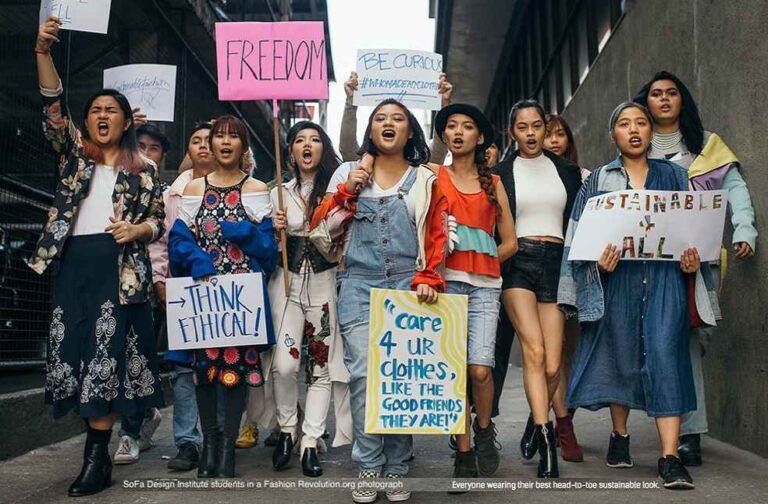The EU’s Green Fashion Revolution, an ambitious initiative to reduce the region’s environmental footprint, has its sights set on one of the bloc’s major pollutants – the fashion industry. The EU’s plan to bring the textile sector in line with global sustainability efforts could revolutionize the fashion world by the end of the decade.
Leading fashion bodies across Europe, including France’s Fédération de la Haute Couture et de la Mode, Italy’s Camera Nazionale Della Moda Italiana, and the UK’s British Fashion Council, have united under the European Fashion Alliance (EFA). The coalition, formed a year ago, has been actively considering the implications of these proposed regulations on their sector.
 The EU’s sustainability strategy includes proposals for longer-lasting products that are easier to repair and recycle, stricter regulations against greenwashing, and increased transparency and accountability for unsold or unwanted clothing. This strategy is a response to the alarming statistic that textiles account for as much as six percent of the bloc’s environmental impact, as reported by the European Commission’s Joint Research Centre.
The EU’s sustainability strategy includes proposals for longer-lasting products that are easier to repair and recycle, stricter regulations against greenwashing, and increased transparency and accountability for unsold or unwanted clothing. This strategy is a response to the alarming statistic that textiles account for as much as six percent of the bloc’s environmental impact, as reported by the European Commission’s Joint Research Centre.
While the EFA agrees with the overall goal of enhancing sustainability, they voice concerns over several specific proposals. The proposed requirement for companies to disclose their unsold and discarded inventory is a particular point of contention. The EFA argues that this requirement would expose “highly sensitive data” and should only be made available to officials.

Luxury brands, too, are apprehensive about the potential new durability requirements. Traditional wash tests may not be compatible with the often delicate designs of luxury clothing. Instead, the EFA suggests new metrics that consider consumer care, quality, reusability, and repairability, for a more “holistic” approach to measuring durability.
A proposed ban on destroying unsold goods has also drawn attention, especially from high-end labels which have historically preferred to destroy unsold and damaged items rather than risk damaging their image with heavy discounts or grey market sales. The EFA argues any ban should be limited to products fit for sale and should exclude counterfeit items, prototypes, and samples.
 The EFA also warns against mandatory minimums for recycled content, citing a potential restriction on creative freedom and a decline in product quality. Instead, they recommend focusing on promoting the use of other low-impact materials.
The EFA also warns against mandatory minimums for recycled content, citing a potential restriction on creative freedom and a decline in product quality. Instead, they recommend focusing on promoting the use of other low-impact materials.
As the EU moves forward with these ambitious plans, there is still much debate about what form the final regulations will take. The fashion industry, through the EFA, continues to lobby for regulations that they view as “feasible, yet ambitious.”

This landmark shift towards sustainable fashion is being watched globally, and the eventual outcome could set a precedent for other major economies to follow. The world waits to see how the EU will balance the need for climate action with the concerns of an influential industry.
GLOBAL ROUNDUP: U.S. Firms Reevaluate China Ties Amid Rising Trade Tensions



